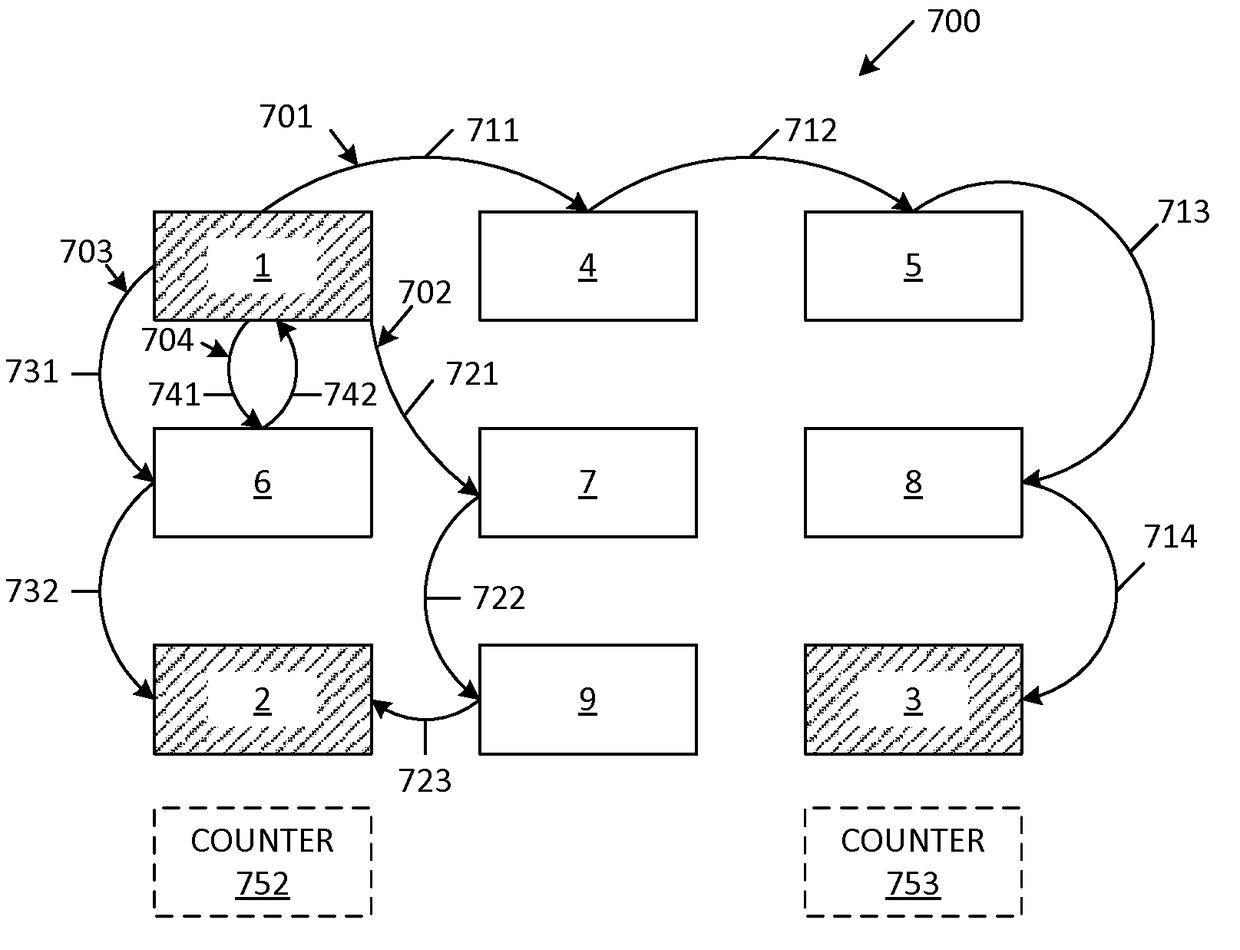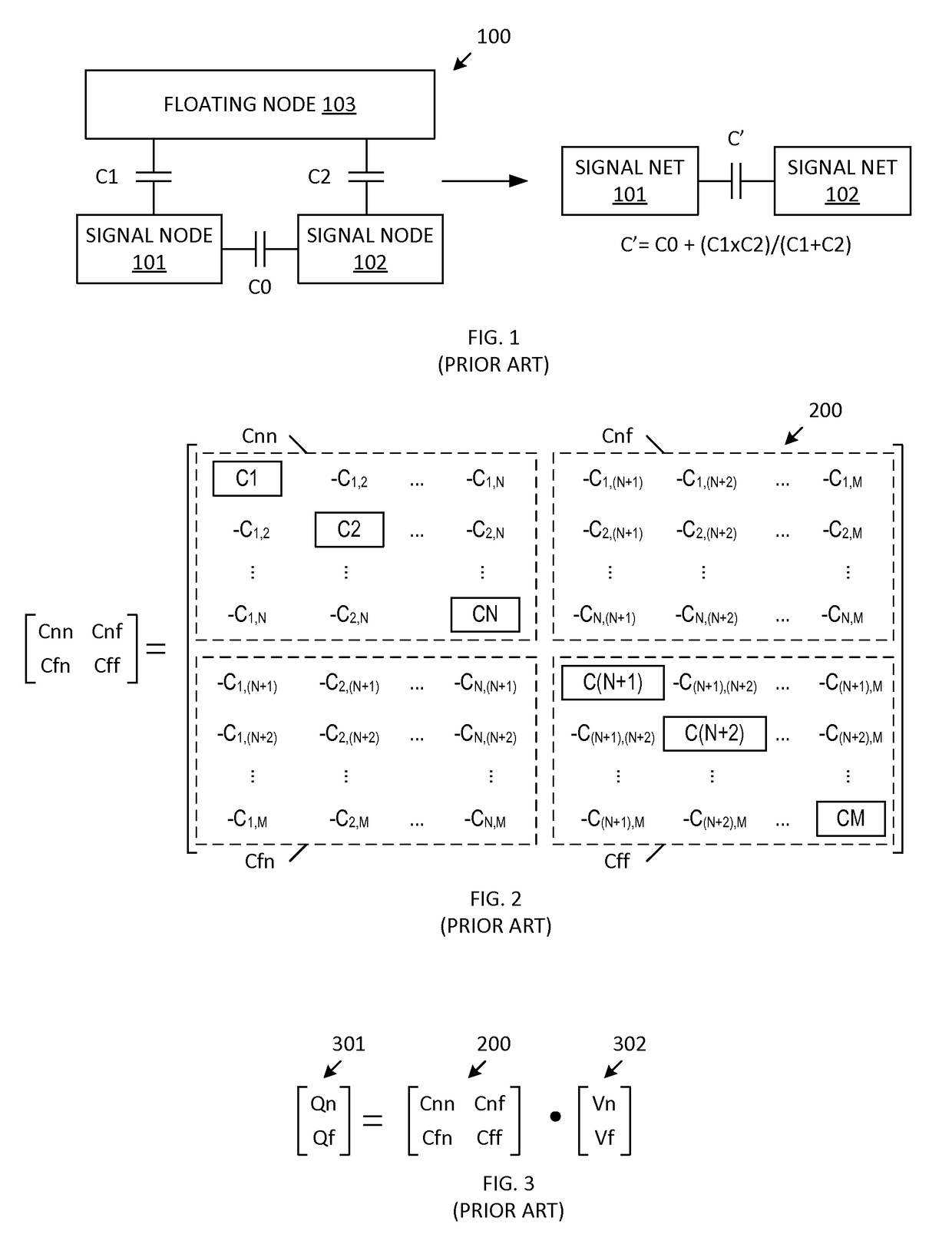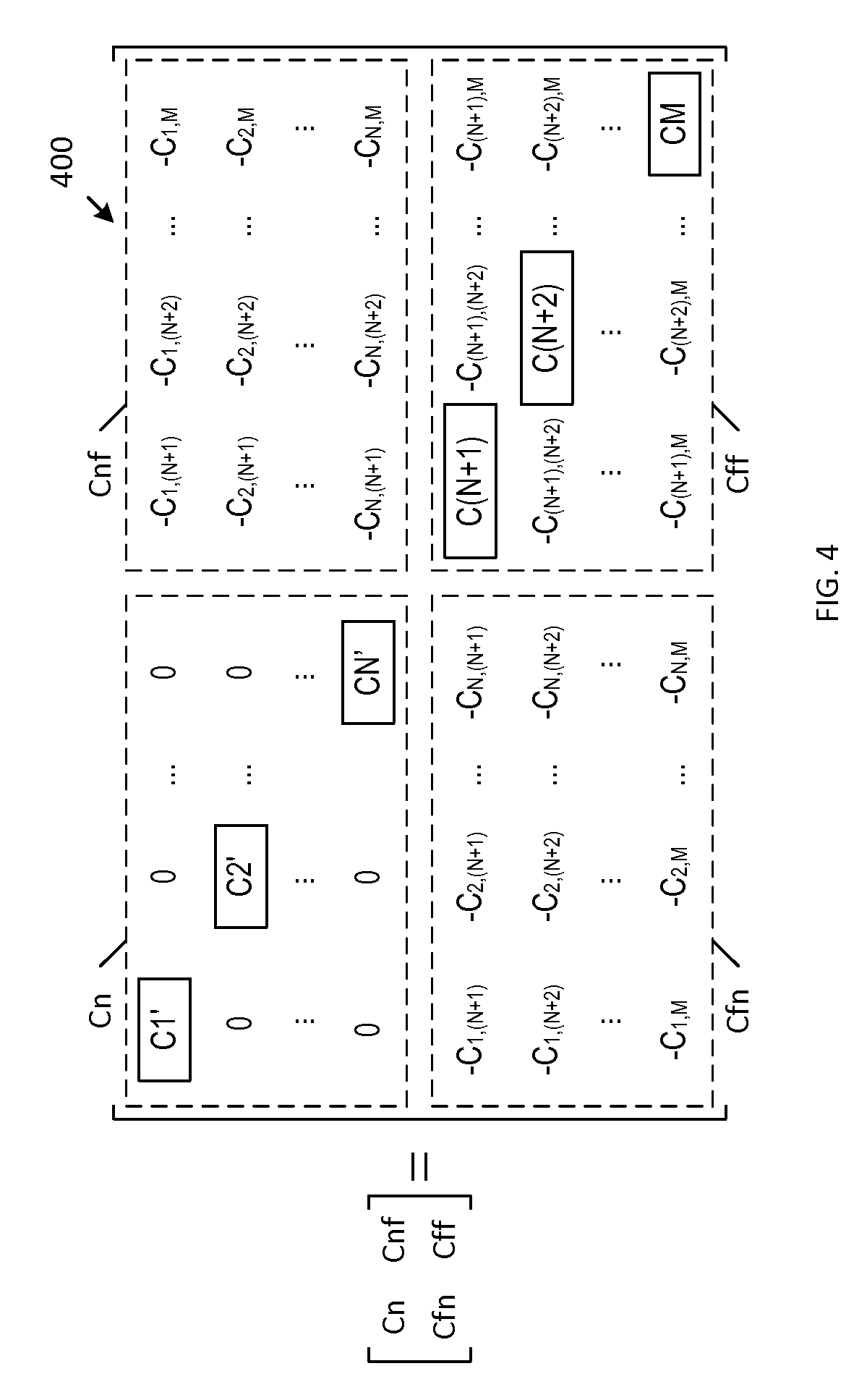Floating Node Reduction Using Random Walk Method
a technology of floating nodes and random walk, applied in the field of floating node reduction in integrated circuit design, can solve the problems of excessive cpu run time required to determine the schur complement matrix, poor performance, and increased difficulty in performing floating node reduction, and achieve the effect of controlling the accuracy of determined indirect coupling capacitances
- Summary
- Abstract
- Description
- Claims
- Application Information
AI Technical Summary
Benefits of technology
Problems solved by technology
Method used
Image
Examples
Embodiment Construction
[0027]In general, an extracted capacitance matrix of an interconnect structure is converted into a probability matrix. A plurality of random walks are performed from each signal node of the interconnect structure, using the probability matrix to direct the random walks to other signal nodes (via at least one floating node). The results of the plurality of random walks from each signal node are used to approximate the Schur complement matrix (and thereby implement floating node reduction). The Schur complement matrix is approximated in an accurate and timely manner, thereby overcoming the deficiencies of conventional methods. The present invention will now be described in more detail.
[0028]In the examples described herein, the extracted capacitance matrix 200 (FIG. 2) is converted into a probability matrix in the manner described below. Initially, all of the signal node-to-signal node capacitances between nodes 1 to N are ignored by setting each of these capacitances to a zero value....
PUM
 Login to View More
Login to View More Abstract
Description
Claims
Application Information
 Login to View More
Login to View More - R&D
- Intellectual Property
- Life Sciences
- Materials
- Tech Scout
- Unparalleled Data Quality
- Higher Quality Content
- 60% Fewer Hallucinations
Browse by: Latest US Patents, China's latest patents, Technical Efficacy Thesaurus, Application Domain, Technology Topic, Popular Technical Reports.
© 2025 PatSnap. All rights reserved.Legal|Privacy policy|Modern Slavery Act Transparency Statement|Sitemap|About US| Contact US: help@patsnap.com



